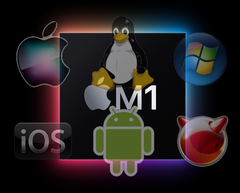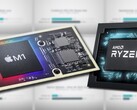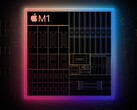Apple bet big on in-house developed chips and it certainly hit the jackpot in 2020 with its M1 processors based on ARM’s architecture. Some would argue that M1 is a mobile chip and Apple still needs to prove that the ARM architecture can be optimized for desktop workstation applications. Nevertheless, the impressive energy efficiency of the M1 chips is also complemented by Apple’s software mastery. For now, Apple does not seem to be willing to license this architecture and offering it as an open-source solution that can easily be ported for other operating systems like Windows or Linux is out of the question entirely, so programmers that really want to harness the power of the M processors are more or less expected to be proficient at macOS code. Another more complicated solution would be to reverse-engineer the entire M1 platform, but such an approach could have legal repercussions. This clearly has not stopped Maynard Handley (one of the original Apple QuickTime developers) from compiling a PDF document that offers a fairly extensive deep dive into Apple’s custom ARM architecture.
Handley’s reverse-engineering document titled “M1 Exploration” has reached version 0.70 and contains findings from quite a few professional and enthusiast contributors that helped deconstruct the M1 architecture through thorough diagnostics, tests and patent analysis. It also incorporates some information provided by the team who managed to run Linux on M1, plus Handley’s own expertise and experiments regarding Apple’s research on branch prediction and hardware / logic mitigations for Spectre-like security flaws that have forced Intel and AMD to modify their processor microcode.
It is still unclear if Apple is OK with this being available for free on the Internet. Granted, the document is nowhere near a definitive version, and there are still some unknown inner workings, but more and more people are starting to contribute to it and it may even help reverse-engineer Apple’s upcoming M chips to be compatible with non-macOS software.
Buy the 2020 Apple MacBook Air Laptop with M1 processor on Amazon











